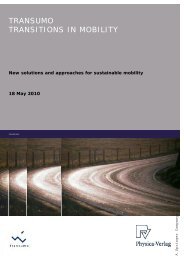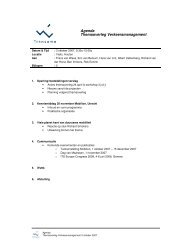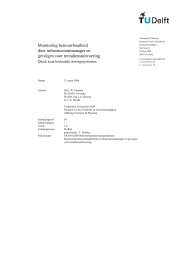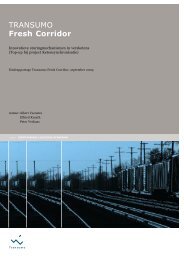Casestudie Breakdown prediction Contell PILOT - Transumo
Casestudie Breakdown prediction Contell PILOT - Transumo
Casestudie Breakdown prediction Contell PILOT - Transumo
Create successful ePaper yourself
Turn your PDF publications into a flip-book with our unique Google optimized e-Paper software.
Another current approach is regression. The main idea is to find a function that<br />
describes the temperature sequence best. A found function could be used for<br />
description as well as for <strong>prediction</strong> of future behavior ([Gentle02], p. 301). 34 Beside<br />
these presented approaches, artificial neural networks are applied again to gain<br />
additional knowledge (e.g. [Hawibowo97], p. 21-45). 35<br />
The succeeding chapter 5 will introduce the identified methods within this chapter<br />
and will test them on applicability to the setting of sensor based temperature<br />
monitoring. Before that, the next section introduces an approach that promises to be<br />
generalized. Hence, it should be applicable to the current problem.<br />
4.3.2 A Generalized Approach<br />
As already mentioned in section 4.3, Frank Daßler presents an approach that should<br />
be able to predict future measurement values without any knowledge of the<br />
underlying setting. The Main idea is to combine several known approaches to a new<br />
one. ([Daßler95], p. 7-8)<br />
The presented approach is based on the idea to solve the problem of just setting<br />
critical limits. According to the author, these existing methods lead to three problems:<br />
([Daßler95], p. 19)<br />
1. Just setting critical limits leads to sudden changes of current state. As long as<br />
a value does not exceed the predefined range, the state is classified as OK.<br />
2. In the moment of exceeding, an immediate reaction is necessary to solve<br />
dangerous situations.<br />
3. Chosen limits with a lower span to reduce situations of immediate danger lead<br />
to a higher quantity of false alarms due to outliers.<br />
Figure 4-1 illustrates the general proceeding of the new approach, which shall be<br />
able to solve the just mentioned problems:<br />
34 See section 5.4 for details<br />
35 See section 5.9.2 for details<br />
47
















